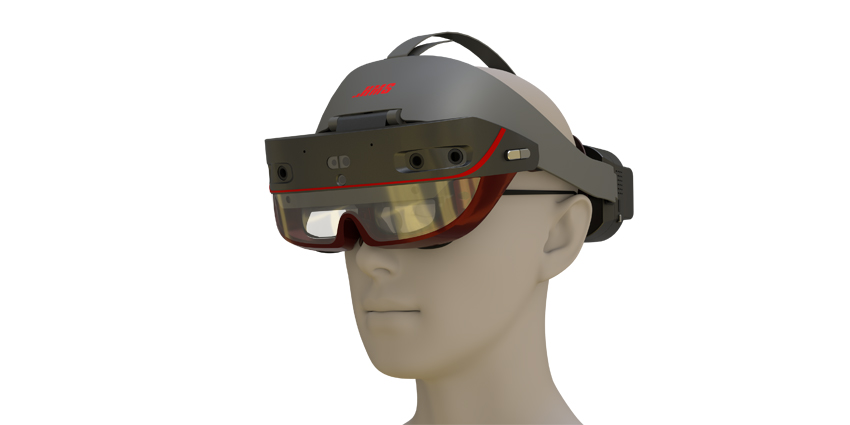Augmented reality (AR) solutions have grown in popularity over the last few years, utilising mostly consumer-facing smartphone platforms. These have appeared across Google’s ARCore, Niantic’s Lightship AR developer kit (ARDK), Snap Lens, Meta’s Reality system, and Apple’s ARKit platforms, namely for smartphones.
Additional firms such as IKEA and Walmart have also explored how to use AR for shopping experiences.
These apps have offered a low barrier to entry into extended reality (XR), but many companies have begun exploring AR use on smart glasses. For the enterprise, this has proven immensely effective for managing workflows and providing training and guidance for workforces.
This comes amid skyrocketing demand for enterprise-focused AR wearables. An Allied Research market report has found that AR smart glasses could reach $33.16 billion by 2027.
With a growing number of use cases set to develop across the industry, businesses are leveraging emerging technologies for targeted purposes. Here are some key reasons why shopping for the right AR specs can make or break a business’ crucial milestones.
Find your AR Solutions Use Cases
When searching for the right AR smart glasses, businesses must evaluate their need to invest in the technology. While there are a growing number of use cases, AR smart glasses are still very much under development and require clarity on their intended use.
Each set of smart glasses has bespoke features for accomplishing specific agendas. Some companies may choose rugged smart glasses for first responders or lightweight devices for remote guidance teams.
For example, Lenovo’s A3 and Magic Leap 2’s smart glasses are designed for prolonged use, low latency, and industrial environments. Conversely, Nreal’s devices are designed for widely different use cases and are better suited for showcasing AR content.
Magic Leap also pivoted to healthcare, with the Florida-based firm designing its AR headsets for surgeons and medical professionals. Users can wear the lightweight, agile kit for hours.
Consider AR Device Design Requirements
Companies must also consider the ecosystems needed to include in augmented reality solutions. Numerous emerging technologies such as hand and eye tracking, games, productivity suites, and other tools must integrate seamlessly for the user.
Despite this, many firms remain focused on the pragmatic and versatile nature of smart glass units. This allows them to transform their acquired hardware into computing powerhouses to reach specific goals.
One should consider the specific tasks the device will need to fulfil, environmental conditions for use, durability metrics, processing, bandwidth requirements, and others.
For example, remote workers operating in distant locations with weaker internet connections can leverage Kognitiv Spark‘s mixed reality (MR) platform. The all-in-one interface provides live-streamed video, images, manuals, and other files with minimal bandwidth requirements of roughly 340 kilobytes.
Lenovo also provides its ThinkReality A3 smart glasses in an industrial model. This offers rigorous durability with hardhat integration for on-site staff at factories and inspection points.
Furthermore, device management is immensely critical to managing fleets of devices. Companies like Lenovo, ARuVR, Microsoft, and ArborXR have mastered such device requirements with administrative account management. Doing so allows businesses to deploy software upgrades, encrypt communications, upload training modules, and transport files across headsets. This offers a seamless, centralised platform for managing devices, whether for a small team or a massive workforce of thousands of people.
Know Your Essentials
Current AR smart glasses should also recognise maintenance and operations (M&O) procedures and offer a comprehensive solution for repairing hardware.
Consider who will provide device maintenance, how rapidly firms can repair devices, and the overhead costs. This significantly boosts turnaround times for damaged, lost, or faulty devices.
Teams also using such devices need top waveguides and imaging technologies for clear, precise imaging superimposed on physical spaces. Additionally, upgrades for after-market components such as batteries, headset elite straps, guards, and base stations will also play a huge role in supply chains.
Experiment with AR Devices
As smart glasses increase in popularity across vertical markets, firms will need to explore additional models, use cases, and field tests for current and upcoming devices.
Companies such as Vuzix and have played a major role in leading such efforts, namely for Japanese first responders. Longan Vision has also struck massive partnerships with the Canadian government to assist firefighters and first responders in live emergency situations.
With the advent of Qualcomm’s Snapdragon AR2 platform, the market can expect a massive wave of new prototypes and models to release with the latest specifications. The augmented reality solutions industry has yet to realise its potential with this leap in progress fully.
Potential buyers are encouraged to explore their options at extended reality (XR) conferences, attend product demos, and follow updates from the world’s top vendors. Many smart glass firms are willing to visit on-site to determine the right applications for businesses with a thorough assessment of current conditions. IT teams can also join these to learn via product demos and immersive experiences.







